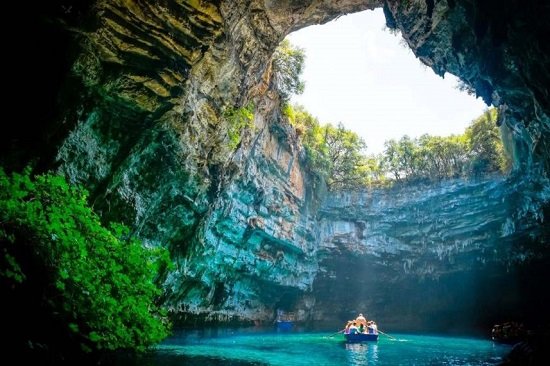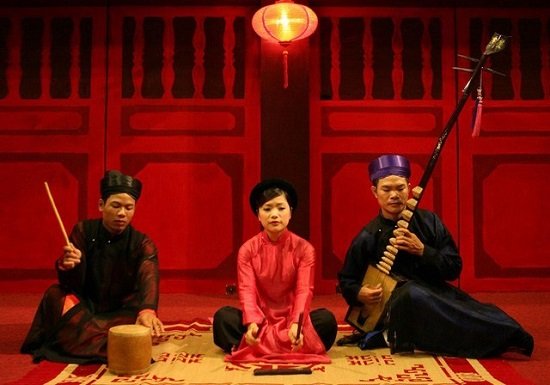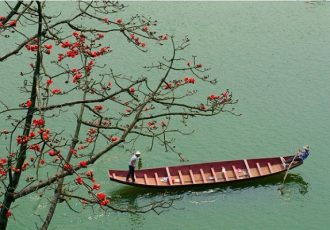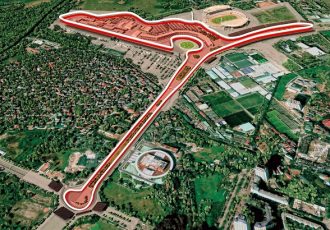Summary
Introduction
Vietnam is a country rich in history and diverse culture. The Vietnamese are therefore very proud to have 22 world heritage sites recognized by UNESCO.
In this article, we give you the details about these world heritages of Vietnam recognized by UNESCO. They can be natural wonders or man-made buildings.But maybe music or carnival, or even some sculpture!
Let’s see together the world heritages of Vietnam recognized by UNESCO!
World natural heritage
1. Ha Long Bay
On December 17, 1994, Ha Long Bay was recognized by UNESCO as a World Natural Heritage Site for outstanding aesthetic value. For the second time, on December 2, 2000, Ha Long Bay continued to be recognized as a world natural heritage according to the standards of geological and geo-morphic values.

Ha Long Bay is the most famous place among the world heritages of Vietnam recognized by UNESCO!
2. Phong Nha-Ke Bang National Park
This national park is located in central Vietnam and was recognized by UNESCO as a World Natural Heritage site in 2003. The park includes the oldest karst mountain in Asia which is believed to have been formed over 400 million years ago. Karst caves are home to several underground river and cave systems. In addition to being the largest cave system in Asia, the cave system also protects the area’s limestone forest. It is listed in the natural category because of its outstanding geological values.
Cultural heritage
3. My Son Sanctuary
During the 23rd conference of the World Heritage Committee, on December 1, 1999, the My Son Cham archaeological site was recognized as a world cultural heritage because it is an example of the cultural exchange with indigenous cultural integration. External influences, especially Hindu architectural art, vividly reflect the development process of Champa culture in Southeast Asian cultural history.
Indeed, My Son Sanctuary is a ruined and partially abandoned Hindu temple complex, built between the 4th and 14th centuries AD. These Hindu temples were built to worship the Hindu god Shiva. The temples are built on a valley surrounded by two mountain ranges. This place is also recognized as the oldest inhabited archaeological site in Indochina. However, much of the temples and structures in the area were destroyed during the Vietnam War.

4. Hoi An Ancient Town
Among the world heritage sites of Vietnam recognized by UNESCO, Hoi An city is a great place to visit. On December 4, 1999, UNESCO recognized Hoi An ancient town as a world cultural heritage on the basis of two criteria. First, it is the special heritage of the combination of cultures over the ages in one international trading port. Second, it is an example of the preserved traditional Asian port city.
The town of Hoi An was an important trading port from the 15th to the 19th centuries. But to this day, you’ll still see the ruins of the port city that flourished in previous centuries. The buildings and street plans have largely remained intact despite the foreign invasion. At the same time, you’ll still have hints of the influence of foreign invaders and natives, making it a unique World Heritage Site.

5. Complex of Hue Monuments
Hue was named the capital of Vietnam in the early 19th century. It served as a political, religious and cultural center until 1945 under the Nguyen Dynasty. The intricate monuments located in the city also serve as the geographical center of Vietnam, making it easily accessible by sea. The monuments and the entire city of Hue have been designed in accordance with its natural setting while incorporating ancient Eastern philosophy. The most majestic is the Imperial City.
Why do we say the complex?
The complex of ancient monuments of Hue refers to all the monuments of this city registered as a UNESCO World Heritage Site in 1993. It mainly includes:
- The Citadel , the outermost, referred to house the administrative buildings
- The Imperial City referred to house the royal palaces and places of pilgrimage
- The Forbidden Purple City referred to house the royal residences
Apart from the works that constitute the former Imperial Capital – Citadel, Forbidden Purple City, there are also pagodas, temples, convents and schools but above all the remarkable funerary ensembles of the Nguyen dynasty, such as: the mausoleum of King Minh Mang, the tomb of Emperor Tu Duc, the pagoda of the Heavenly Lady, etc.
Therefore, the 17th Conference of the World Heritage Committee, on December 11, 1993, recognized the complex of ancient monuments of Hue as world cultural heritage with the following criteria: Hue is an outstanding witness of the Vietnamese feudal power which had lost its peaked in the early 19th century and is an outstanding example of an eastern feudal capital.

6. Central Sector of the Imperial Citadel of Thang Long – Hanoi
Built in the 11th century, the Imperial Citadel of Thang Long in Hanoi was inscribed on the UNESCO World Heritage List in Vietnam on July 31, 2010 based on the following criteria:
– Testimony of the influences of the exchange mainly from China in the north and the Kingdom of Champa in the south
– Testimony of the long-standing cultural tradition of the Vietnamese people established in the Red River Delta.
– Being the center of power from the 7th century until today.
– Directly relate to many important cultural and historical events of the country.
In addition, to this day, the Imperial Citadel and Hoang Dieu Archaeological Site reflect Southeast Asian culture reminiscent of life in the Lower Red River Valley of Hanoi.
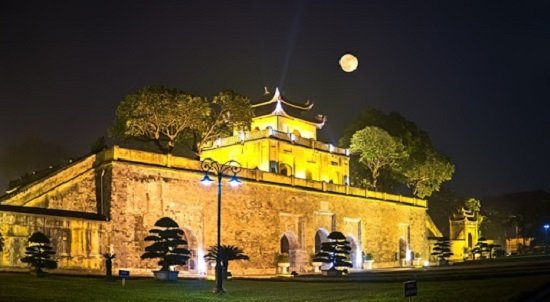
7. Ho Dynasty Citadel
The Ho Dynasty Citadel was built in the 14th century and based on the principles of feng shui. The Ho dynasty citadel is located in Thanh Hoa. This is evidence of the flourishing of Neo-Confucianism in Vietnam at this time and its spread to other parts of East Asia. Moreover, the citadel represents a new style of imperial city that is growing in Southeast Asia. This World Heritage Site consists of three components: the Inner Citadel, the Outer La Thanh Wall and the Nam Giao Altar.
As a result, at the 35th conference of the World Heritage Committee on June 27, 2011 in Paris officially inscribed the Ho Dynasty Citadel in the list of World Cultural and Natural Heritage with two criteria:
– A clear manifestation of the significant cultural interference and exchange of human values between Vietnam and East Asian and Southeast Asian countries in the late 14th and early 20th centuries .
– A striking example of a type of imperial architecture that symbolizes the imperial power typical of the East, and at the same time a solid and majestic military fortress.
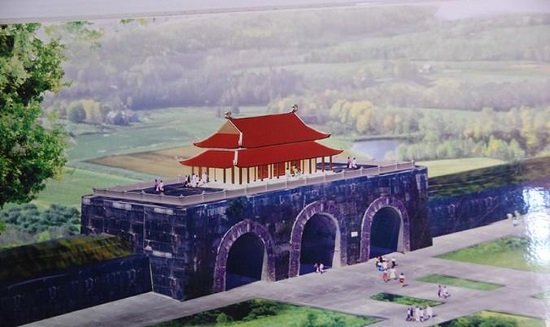
Natural and historical heritage
8. Trang An Landscape Complex
Located in Ninh Binh, this area is known for its scenic landscapes and cave tours by boat. It was included in the list of UNESCO World Heritage Sites in Vietnam in 2014 for both its cultural and natural value. It is often called “the land of Ha Long Bay”. The landscape includes several limestone karst peaks, valleys and steep cliffs. The caves have been explored by scientists who have been able to uncover evidence of human activity in the cultural landscape dating back 30,000 years. According to the evidence collected, the people who lived in the area were seasonal hunter-gatherers. There are also small villages, temples, rice fields and pagodas in the area.
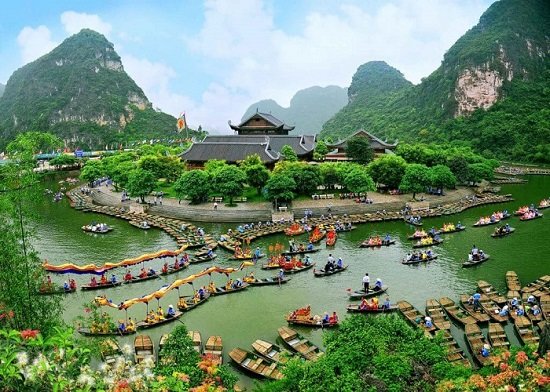
Intangible cultural heritage
9. Hue Court Music – Hue Court Music
Among the world heritages of Vietnam recognized by UNESCO is music! Hue royal court music is a genre of feudal court music, played on festive occasions (king coronation, ice bridge, other religious holidays) in the year of the Nguyen Dynasty, Vietnam. On November 7, 2003, Hue Royal Court Music was included in the list of Intangible and Oral Masterpieces of Humanity.
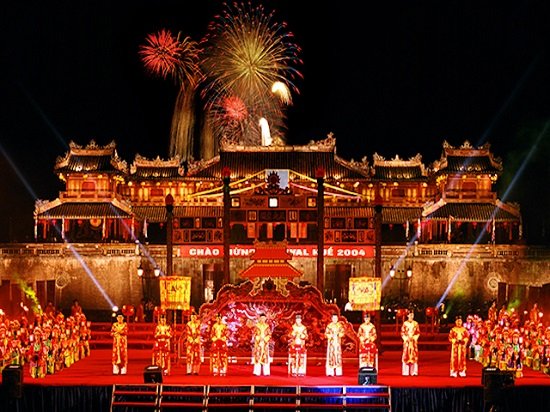
10. Cultural space of gongs in the Central Highlands
Inscribed on the Representative List of Intangible Cultural Heritage of Humanity in 2008 (first published in 2005), the Central Highlands gong cultural space is closely associated with the daily life of local people. Their belief system forms a mystical world where the gong creates a privileged language between humans, the divine, and the supernatural world.
Behind each gong hides a god or goddess. Each family has at least one gong, which indicates the wealth, authority and prestige of the family. While many types of brass instruments are used in different ceremonies, gongs alone are present in all ceremonies of public life.
Each musician carries a different gong with a diameter of 25 to 80 cm. Between three and twelve gongs are played by village ensembles, male or female. Various arrangements and rhythms were adapted to suit the context of the ceremony, such as bull sacrifices, rice blessings, or mourning ceremonies.
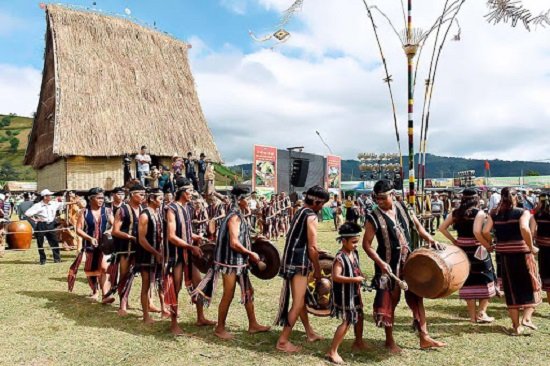
11. Bac Ninh Quan Ho folk song
On September 30, 2009, Bac Ninh quan ho singing was recognized by Unesco on the Representative List of Intangible Cultural Heritage of Humanity. These are the folk songs of Bac Ninh Quan ho, which are performed as alternating verses between two women in one village singing together and two men in another village responding with similar melodies but lyrics. difference. Women traditionally wear distinctive large round hats and headscarves; Men’s attire includes turbines, umbrellas, and tunics.
The lyrics of the song express the emotional states of longing, sadness when parting, and happiness when meeting your lover again.
Chanting “quan ho” is common in ceremonies, festivals, contests, and intimate gatherings, where guests will perform different verses for the host before singing goodbye.
Quan ho songs demonstrate the spirit, philosophy and local identity of the communities in this region and contribute to strengthening social relationships in villages that share similar cultural practices between them.
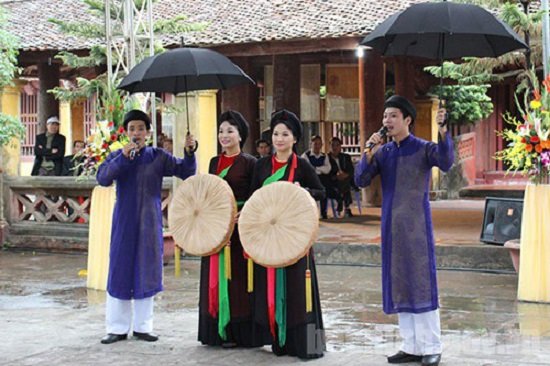
12. “Ca Tru” (court songs)
Recognized by UNESCO in 2009 as one of Vietnam’s world heritage sites, “Ca Tru” is a complex form of singing poetry found in northern Vietnam, using lyrics written in the traditional poetic form of Vietnam.
The “ca tru” groups include three performers: a singer who uses breathing and vibration techniques to create a unique ornate sound, while dancing percussion or wooden box strikes, and two performers who play instruments that produce the melodious sound of the treble and the loud sound of drum.
Some ca tru shows also include dance. The diverse forms of ca tru serve different social functions, including worship singing, entertainment singing, court singing, and singing for competition.
“Ca Tru” has 56 different musical forms or melodies, each of which is called a “the cach”. Folk artists transmit the music and poems that make up the “Ca Tru” pieces through oral tradition and technique, once in their family line, but now to anyone who wants to learn.
13. Giong Festival
On October 1, 2019, recognized by UNESCO as the “Giong” festival as a representative intangible cultural heritage of humanity, the “Giong” festival of Phu Dong and Soc temples is held annually in the outskirts of Hanoi, the capital of Vietnam.
Every spring, before the rice harvest, the Vietnamese people pay homage to the mythical hero, the saint “Saint Giong”, who defended the country against foreign invaders, honored as the protection god of crop, national peace and family prosperity.
The festival at Phu Dong Temple takes place in the fourth lunar month in his birth village, symbolically recreating his exploits by riding a white horse into battle and staging an elaborate flag dance to symbolize his birth. the very battle of infinity. The young men were intensively trained to play the roles of Chess Captain, Drum Master, Gong Master, Master and Children, while 28 girls aged 9-13 were selected to play the generals. enemy. The dance moves of the flag’s owner along with the sound of drums and gongs convey the development of the battle, and the paper butterflies released from the flag symbolize the disbanding of the invaders.
The arrival of rains after the festival is considered a wish from the saint for a bountiful harvest. The sacrifice ceremony at Soc temple, where Saint “Giong” ascended to heaven, takes place in the first lunar month, includes a ritual bathing the statue and carrying bamboo flowers to the temple to offer to the saint.
Learn more about festivals in Vietnam!
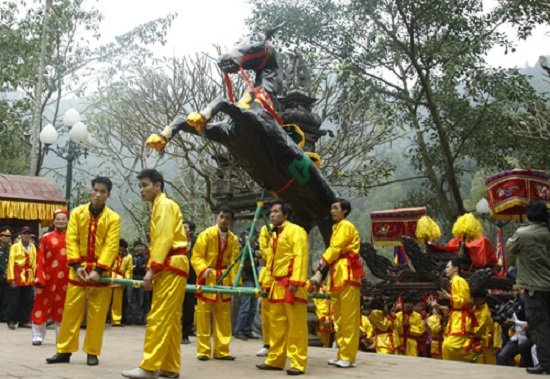
14. “Xoan” folk song
Inscribed on the Representative List of the Intangible Cultural Heritage of Humanity in 2017, Xoan singing in the north of Phu Tho province includes rhythms of singing, dancing, drums and Khen.
It is closely related to the belief of worshiping the Hung Kings, a belief derived from the custom of worshiping ancestors of the Vietnamese people. Porters and practitioners formed four guilds, in which the male and female “Smurfs” played the most important roles: they preserved songs, selected students, taught singing styles and lessons. item, practice organization. They also actively introduce and teach Xoan singing in clubs and guilds.
As a community performing art, Xoan singing promotes cultural understanding, community cohesion and mutual respect. The Vietnam Music Institute has collected 31 Xoan songs, and through the efforts of some Xoan artists, four guilds have been established. Thirty-three dedicated clubs also exist and seminars are organized to deepen knowledge of Xoan. Advanced Xoan performers spread word of mouth, combined with the use of written songs and audio and video recordings.

15. Belief in worshiping King Hung
A festival inscribed in the world heritage of Vietnam by UNESCO. The cult of the Hung Kings in the North of Phu Tho province annually attracts millions of people to remember their ancestors and pray for favorable weather, good crops, good luck and good health.
The biggest ceremony is the death anniversary of Hung Kings, which is held for about a week at the beginning of the third lunar month. The people of the surrounding villages clad in splendid costumes and competed to supply the finest palanquins and most precious offerings for the key ritual, in which drums and gongs were carried into the main temple.
Communities offer rice dishes such as square cakes and glutinous rice cakes and have folk performances and oral arts, drumming, Xoan singing, praying for good luck and fortune.
On December 6, 2012, Belief in the worship of Hung Kings was inscribed on the Representative List of Intangible Cultural Heritage of Humanity.
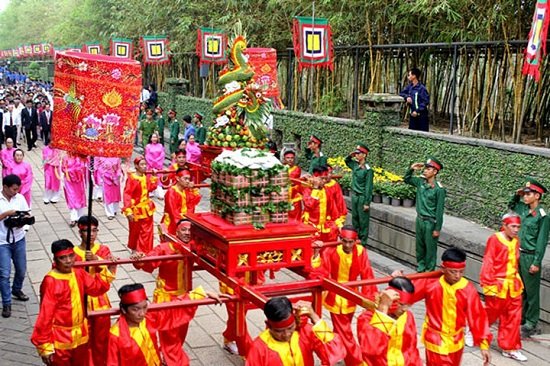
16. “Don ca tai tu”
Inscribed on the Representative List of Intangible Cultural Heritage of Humanity in 2013, the art of Don Ca Tai Tu is an indispensable element in the spiritual activities and cultural heritage of the people of the South.
The music and songs reflect the life and work of people in the land and rivers of the Mekong Delta. Performed at many events such as festivals, anniversaries and anniversaries, “Don ca tai tu” is thus intimately linked with other customs, cultural practices, oral traditions and crafts.
Performers express their emotions by improvising, embellishing, and altering the skeletal melodies and key rhythmic patterns of these works. “Don ca tai tu” is played on a variety of musical instruments, including the lunar lute, two-stringed violin, sixteen-stringed zither, baule, percussion, lute, and bamboo flute. Its repertoire is based on twenty main songs and seventy-two classical songs.
The art of music is transmitted orally, based on imitation, from master musicians and singers to students. Musicians must take at least three years to learn basic instrumental techniques and master the modes of music to express different moods and emotions. Singing students learn traditional songs and learn to subtly improvise, using different decorative techniques.
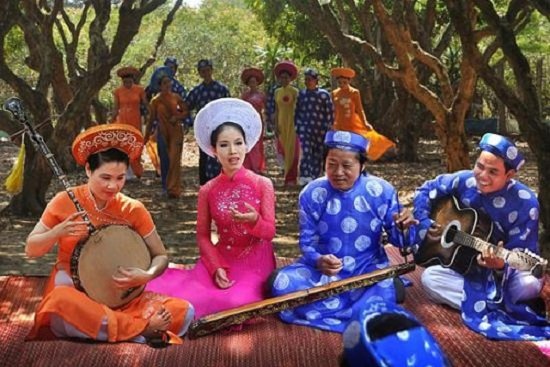
17. The famous song “vi et giam”
Vi, Giam songs are sung by many communities in the North Central provinces such as Nghe An and Ha Tinh. Specific songs are sung without instrumental accompaniment when people plant rice in the fields, row boats, make conical hats or put children to bed.
The lyrics of Vi, Giam use dialects and idioms which is typical of Nghe Tinh region and the singer sings with the local people’s own voice.
Many of the songs focus on key values and virtues including respect for parents, loyalty, care and devotion, the importance of honesty and a kind heart in maintaining village customs and traditions.
Singing gives people the opportunity to relieve difficulties at work, relieve troubles in life, and express love between men and women.
Vi, Giam folk songs were recognized by UNESCO as an Intangible Cultural Heritage of Humanity on November 27, 2014) during the 9th session of the Intergovernmental Committee for the Protection of Intangible Cultural Heritage , at the organization’s headquarters in Paris.
Nowadays, Vi, Giam is often performed at community cultural events and sung by artists in theaters.
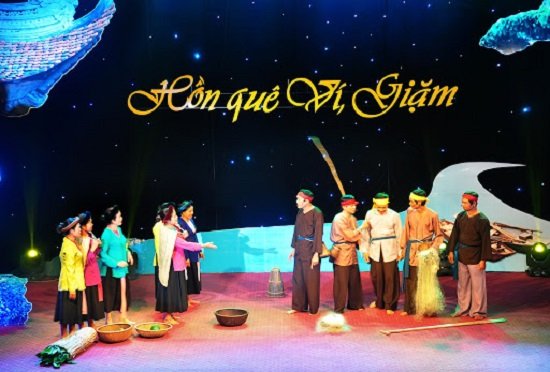
Documentary heritage
18. Woodblock prints of Nguyen Dynasty
Wood carvings of the Nguyen Dynasty are the first world documentary heritage of Vietnam recognized by UNESCO on July 31, 2009.
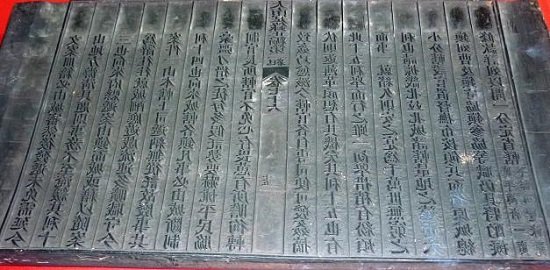
19. Stone stele recording contests for imperial citadel of Le and Mac dynasties
In March 2010, 82 steles of doctors from the Le – Mac dynasties (1442-1779) at the Temple of Literature – Quoc Tuu Giam (Hanoi) were recognized by UNESCO as a World Documentary Heritage. This is the only doctorate stele in the world with an inscription (stele) that not only lists the doctors who passed the exam nearly 300 years ago (from 1442 to 1779) but also records the history of the exams and philosophy of the dynasty on education and training and the use of talents.
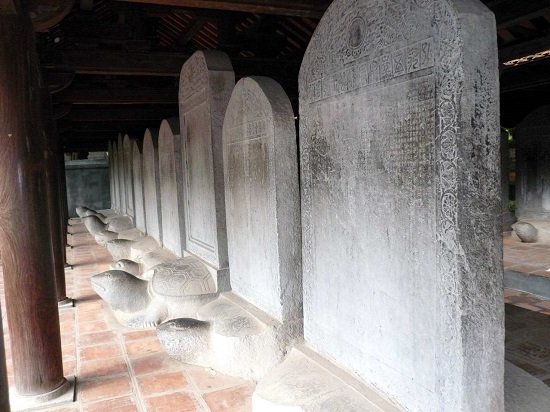
20. Wooden tablet of Vinh Nghiem pagoda
On May 16, 2012, the UNESCO Asia-Pacific Committee officially inscribed the wooden stele of Vinh Nghiem pagoda on the list of World Memory Documentary Heritage in the Asia-Pacific region. Vinh Nghiem Pagoda is currently storing and preserving many sets of Buddhist scriptures, a set of wooden tablets of more than 10 books with 3,050 engravings.
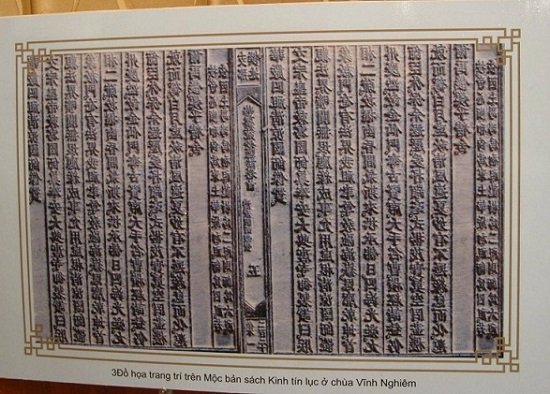
21. Archives of the Nguyen Dynasty’s Royal Court
The Nguyen Dynasty Royal Archives, commonly known as “Chau Ban”, are now among 78 new entries in Unesco’s International Register of “Memories of the World”.
The Nguyen Dynasty Royal Archives is the administrative record of the Nguyen Dynasty, the last feudal dynasty in Vietnam and the region, spanning from 1802 to 1945. The historical collection reflects all aspects. aspects of Vietnamese social history.

World Geopark
22. Dong Van rock plateau
The plateau was recognized by UNESCO as one of 77 geoparks in the world and the second in Southeast Asia after Langkawi geopark in Malaysia in October 2010. Dong Van is Vietnam’s first geopark.
More than 80% of the surface is covered with limestone and there are many rocky peaks above 2000 m above sea level. The rock in Dong Van will contain fossils dating from 400 to 600 million years old.
The park covers the districts of Meo Vac, Dong Van, Yen Minh and Quan Ba, with a total area of 2,300 square kilometers. The center of the rocky plateau is Dong Van city, 150 km from the center of Ha Giang province.
From Noi Bai International Airport, visitors will follow Highway 2 to the north 320 km to the peaceful town of Ha Giang on the banks of the Mi River.
The plateau is a place where visitors can experience thrills and enjoy beautiful scenery.

